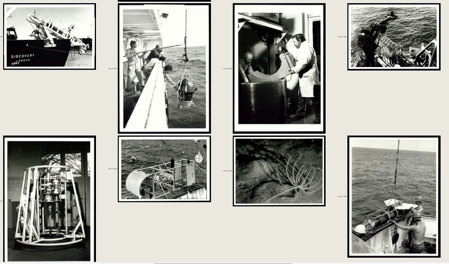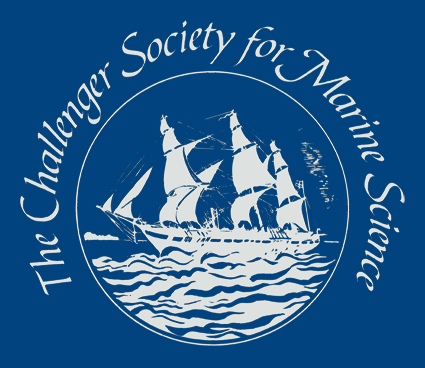Documents and Data
The photographic record
The story of marine science development is brought to life by photographs of work at sea, in the many UK laboratories and, most of all, by photographs of the people involved in research.

The Archives of the National Oceanographic Library include a large collection of photographs dating from the Discovery Investigations in the Antarctic to the present day
More recent photographs are having metadata added through a Crowdsourcer initiative and will eventually be added to the searchable archive.
Many photographs are held in people’s personal collections and we encourage those with such holdings to contact the History SIG so that they may be documented and preserved.
Artefacts and documents
Much oceanographic equipment is bulky and heavy and so there has been no systematic means of preserving it. There are notable exceptions of equipment preserved by the Science Museum. These include the GLORIA Mk II vehicle housed at Wroughton near Swindon, the original tide prediction machine by Kelvin, and the storm surge prediction analogue computer made by Ishiguro. Two, much larger tide prediction machines are on display at NOC in Liverpool.
The recent discovery in the University of Manchester of collection of letters by Alan Turing highlights that fact that many important documents may still lie in filing cabinets and boxes. Where are the hidden gems of marine science?
Historical data
A considerable amount of historical data is known to exist, both in the UK and around the world, in paper form (e.g. hand-written tabulations of various parameters, or even paper tape). An activity called ‘data archaeology’, combined with ‘data rescue’, aims to determine how much historical data exist and then to convert their scientific content into modern computer form, so that the data can be analysed by modern methods. Although it is hard to estimate how much of such historical data has already been lost through decay, or having been thrown away, it is clear that efforts must be made to save what we can. This particularly applies to very old information on parameters such as temperatures or sea levels which are known to be changing. Such ‘data archaeology’ has been extremely successful in extending the length of meteorological records, but it requires effort and as full as possible an understanding of the historical contexts within such measurements were made. This is the sort of activity in which contributions from the SIG could be especially valuable, in applying data archaeology to historical oceanographic information, ensuring that as much historical data end up at BODC for all to use.
Latest News
Royal Society Publishing Photography Competition 2025
Please see a message from the Royal Society below:
We are delighted to announce that the 2025 Competition is now open for entries until 15 August for a chance to win £1000! The competition celebrates the power of photography in conveying the wonder of science happening all around us and photographs can be submitted in the categories of: Astronomy, Behaviour, Earth Science and Climatology, Ecology and Environmental Science, and Microimaging.
The competition is free to enter and open to anyone studying or working in science at graduate level or above. Category winners will receive a one-year membership to the Royal Photographic Society and the overall winner will receive a grand prize of £1,000. Find out more: https://bit.ly/RSPphotocomp
October 2025 MEDIN Workshop: Marine Data Management, Governance and the MEDIN toolset
The Marine Environmental Data and Information Network (MEDIN) are pleased to announce that registration is now open for the next occurrence of our popular free online training workshop: ‘Marine Data Management, Governance and the MEDIN toolset’ on the 13th – 17th October 2025 on OceanTeacher Global Academy.
Marine Data Management, Governance and the MEDIN toolset
The Marine Environmental Data and Information Network (MEDIN) and OceanWise are delighted to invite you to attend our popular free online training workshop: ‘Marine Data Management, Governance and the MEDIN toolset’ on the 19th – 23rd of May 2025.
